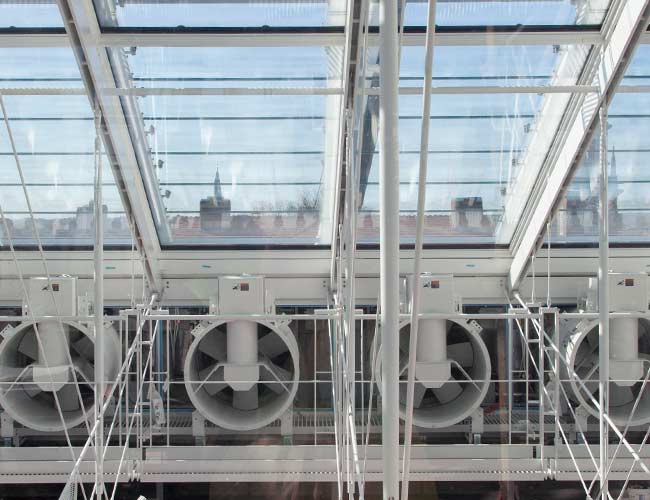The trees and landscaping are in place. The sidewalks are complete. So, why are the museums not open? When the construction manager Skanska turned the building over to us in November, we continued to work with their team and the architects on the finishing touches, making sure everything in the design had been executed.
First, our facilities department began operating our new state-of-the-art climate control systems, which help to protect our collections. These computer-operated systems need to be carefully calibrated to maintain consistent humidity and temperature levels before works of art can be brought into the facility. With over 43,000 square feet of gallery space, a 5,000-square-foot Art Study Center, and 8,000 square feet of compact art storage, this can be a long and complex task. Each space has its own temperature and humidity sensors, and it takes a well-oiled machine to achieve a consistent and steady climate throughout. The targets are 72 degrees Fahrenheit (+/- 2 degrees) and 50% relative humidity (+/- 5%).
Of course, our life safety systems and security systems have been installed, tested, and commissioned in preparation for the first movement of staff and art into the building. More than 600 smoke detectors as well as dozens of other devices that were required by the Massachusetts Building Code prior to occupancy protect our museums. We also have an integrated security program, consisting of physical security, electronic security, access control, and comprehensive video surveillance.
Behind the scenes, curators were busy selecting the works of art that will go on display in the new galleries, as well as developing a range of interpretive materials to accompany them. The placement of each object is the result of many decisions that consider its relationship to adjacent works and to the gallery’s larger themes. Working with architectural renderings and gallery models, curators revised the installation plans again and again until they got it right.
Once the final list of objects had finally been determined, our Straus Center for Conservation and Technical Studies had to evaluate each object. Conservators in the fields of paintings, objects, paper, and science worked in tandem with our curators to assess the stability and appearance of each object to prepare it for display, performing any treatments as necessary. Our digital imaging department then had the opportunity to photograph any objects before they were carefully packed by our Collections Management team.
Only now, as of early January, has the Collections Management staff been able to start their work in the new facility. Over the next several months, the final and most time-consuming step in the process takes place. The enormous task of moving the collections, unpacking thousands of crates, and installing each work of art, along with the labels and other gallery text, is something that is done with carefully orchestrated precision. So, while from the outside it appears that we are finished, on this side of the sidewalks and the trees we are busy preparing the galleries, Art Study Center, museum shop, café, and other public spaces for your visit this fall.







